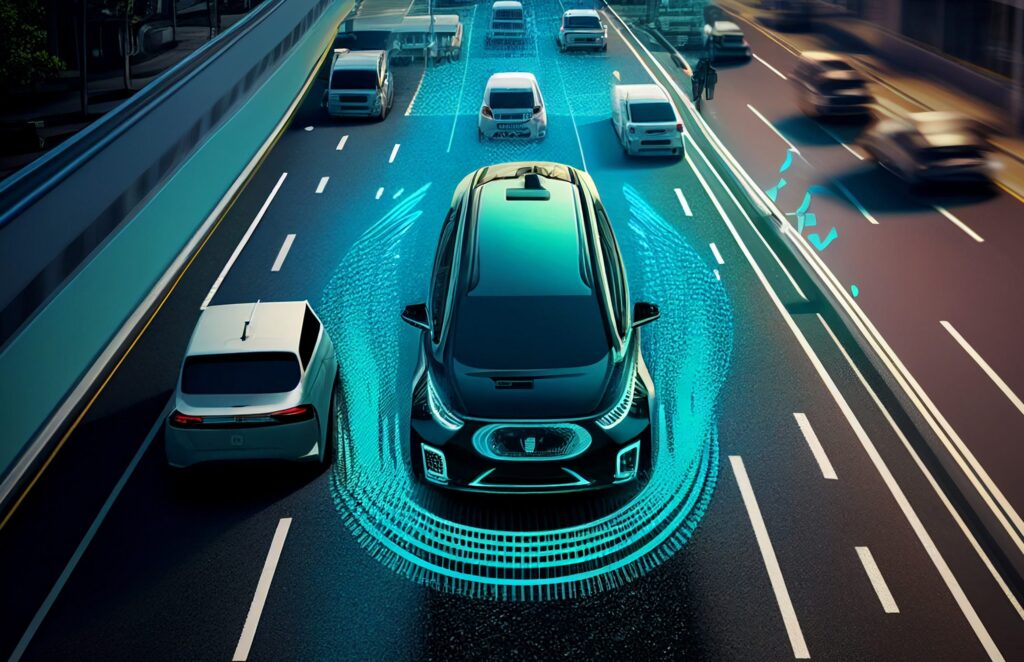Every day, millions of people get behind the wheel, facing the risks of the road. While driving has its inherent dangers, the good news is that automotive technology has advanced significantly to help protect drivers, passengers, and pedestrians alike. From Advanced Driver Assistance Systems (ADAS) to artificial intelligence (AI)-powered safety features, technology is actively making our roads safer. Let’s explore the top seven technologies making a difference in preventing car accidents today and how they’re paving the way for a safer future.
1. Advanced Driver Assistance Systems (ADAS)
Advanced Driver Assistance Systems, or ADAS, include a range of safety features designed to make driving easier and safer. ADAS uses sensors, cameras, radar, and lidar technology to monitor a vehicle’s surroundings. It then offers alerts and even takes action to help avoid accidents.
Key ADAS features include:
- Lane Departure Warning (LDW): Alerts drivers when they unintentionally drift out of their lane.
- Adaptive Cruise Control (ACC): Automatically adjusts the car’s speed to maintain a safe distance from the car in front.
- Automatic Emergency Braking (AEB): Detects an imminent collision and applies the brakes automatically if the driver doesn’t react in time.
- Blind-Spot Detection: Notifies drivers if there’s a vehicle in their blind spot.
These technologies are now widely available in new vehicles, and studies show they can reduce accident rates by as much as 27%. They serve as a “co-pilot,” helping drivers stay alert and avoid hazards.
2. Autonomous and Semi-Autonomous Vehicles
One of the most significant advancements in car technology is autonomous or semi-autonomous driving. These vehicles rely on AI, machine learning, and sensor fusion to navigate without—or with minimal—human intervention. While fully autonomous cars are not yet mainstream, many cars on the road today have semi-autonomous capabilities, including Tesla’s Autopilot and Cadillac’s Super Cruise.
These systems reduce accidents by minimizing human error, which accounts for over 90% of crashes. Autonomous cars follow set patterns and rules, which means no distracted driving, speeding, or fatigued drivers. Although there’s still progress to be made before they are universally accepted, self-driving tech could one day eliminate a significant number of accidents.
3. Vehicle-to-Everything (V2X) Communication
Imagine if cars could talk to each other, alerting nearby vehicles to a sudden stop or a dangerous situation on the road. That’s the concept behind Vehicle-to-Everything (V2X) communication, which allows cars to exchange real-time information with other vehicles (Vehicle-to-Vehicle or V2V) and infrastructure, such as traffic lights and road sensors (Vehicle-to-Infrastructure or V2I).
V2X technology enables cars to anticipate potential hazards, like traffic jams or collisions, which helps drivers make better decisions. For instance, if a car ahead brakes suddenly, V2X can alert vehicles behind it to slow down even before the driver sees the brake lights. This technology is especially beneficial in dense traffic and urban environments where accidents are more likely to happen.
4. Predictive Analytics and Big Data
The explosion of big data has transformed industries, and automotive safety is no exception. Modern vehicles are equipped with data-collecting sensors, generating information on driving habits, traffic patterns, and road conditions. This data is used in predictive analytics models that identify high-risk areas and accident-prone spots.
Insurance companies, city planners, and car manufacturers use predictive analytics to create safer roadways. For instance, if data shows that accidents frequently occur at a specific intersection, planners can take action to redesign it, install better lighting, or even set up cameras. Additionally, some insurers reward drivers who exhibit safe habits, further encouraging responsible driving.
5. Emergency Response Technology
In the event of an accident, every second counts. Modern vehicles are now equipped with emergency response technology that can automatically notify first responders in case of a crash. Using GPS and data collected from the vehicle, these systems pinpoint the exact location and severity of the accident, ensuring a swift response.
GM’s OnStar and Toyota’s Safety Connect are examples of systems that include automatic crash notification. They connect the driver with a live operator who can dispatch emergency services and stay on the line until help arrives. Studies show that these systems can reduce emergency response times by up to 50%, which can be the difference between life and death, especially in rural areas.
6. Wearable Tech and Driver Monitoring Systems
Wearable technology and driver monitoring systems have emerged as critical tools for accident prevention, especially for detecting drowsiness or distraction. Many car manufacturers now offer features that can monitor a driver’s alertness by tracking eye movement, heart rate, and driving patterns.
Volvo’s Driver Alert Control, for example, watches for signs of driver fatigue and provides warnings or suggestions to take a break. Similarly, wearable tech like wristbands or headbands can alert drivers when their attention is slipping, giving a gentle nudge to stay focused. These systems are particularly useful for long-haul truck drivers, who are at higher risk of fatigue-related accidents.
7. Augmented Reality (AR) and Heads-Up Displays (HUDs)
Augmented Reality (AR) and Heads-Up Displays (HUDs) make it easier for drivers to access crucial information without taking their eyes off the road. HUDs project essential data—like speed, navigation directions, and collision alerts—directly onto the windshield, allowing drivers to keep their focus on driving.
AR HUDs are becoming increasingly sophisticated, with some highlighting obstacles, such as pedestrians or animals, that the driver might not notice right away. By enhancing situational awareness, AR HUDs can prevent distractions and help drivers respond to hazards more quickly.
A Real-World Reminder: The Accident Involving Dan Bongino’s Wife
In 2015, Dan Bongino, a well-known conservative commentator, faced a personal scare when his wife was involved in a serious car accident. The experience was a stark reminder of how quickly accidents can happen, even to those who drive cautiously. Though his wife fortunately survived, the accident underscored the importance of vehicle safety features.
Had the technologies available today been widely accessible back then, the outcome could have been different. Features like Automatic Emergency Braking, real-time vehicle communication, and enhanced driver alert systems might have provided her with the tools needed to avoid or minimize the impact of the crash.
Stories like this remind us that even a single moment of distraction or an unexpected hazard can lead to severe consequences. It’s precisely why automakers and tech companies continue to innovate, ensuring that everyone on the road has access to life-saving technology.
Looking Forward: A Safer Future on the Road
Technology’s role in reducing car accidents is clear. From ADAS to autonomous driving, each advancement brings us closer to a future where accidents are the exception, not the rule. While there are still challenges to overcome, such as the integration of V2X communication into existing infrastructure and perfecting self-driving systems, the progress so far is encouraging.
As these technologies become more widespread, drivers everywhere can look forward to safer roads and fewer accidents. And with tech giants, automakers, and government agencies working together, the goal of a world with minimal accidents may be closer than we think.
Driving has always come with risks, but thanks to innovations in automotive technology, those risks are decreasing, and the road ahead looks safer for everyone.







